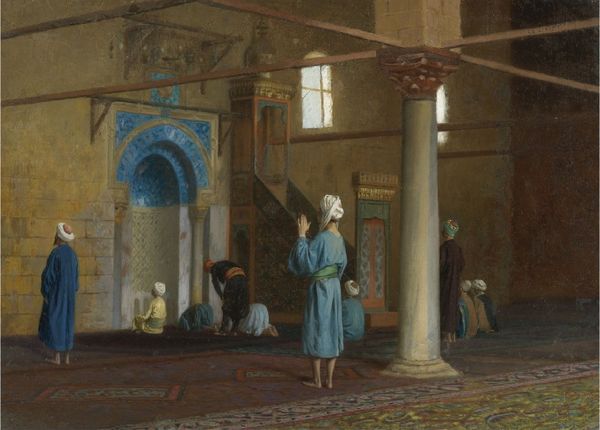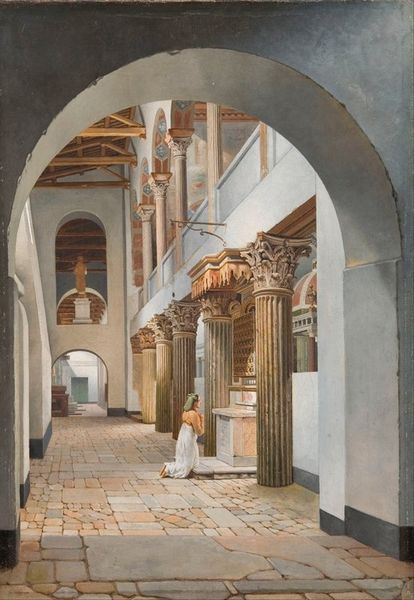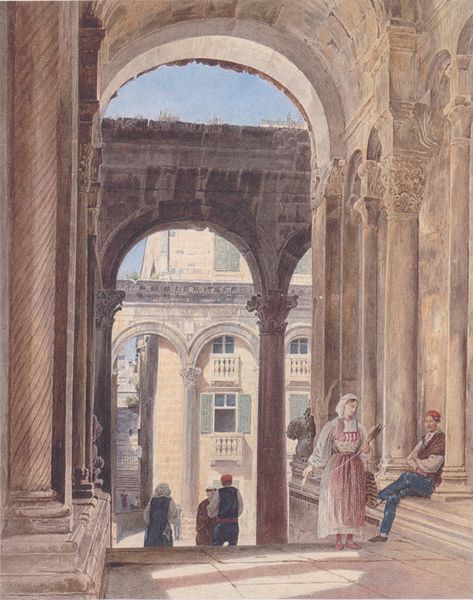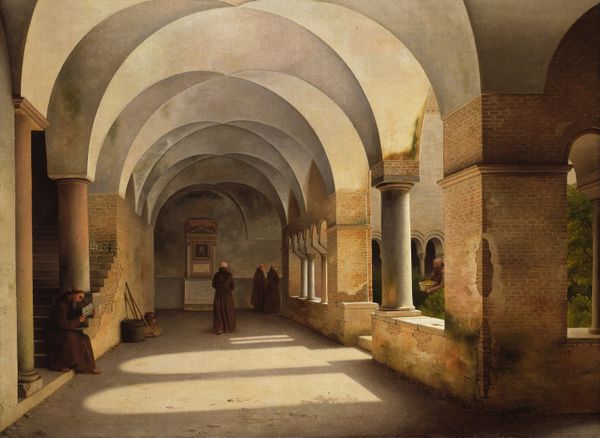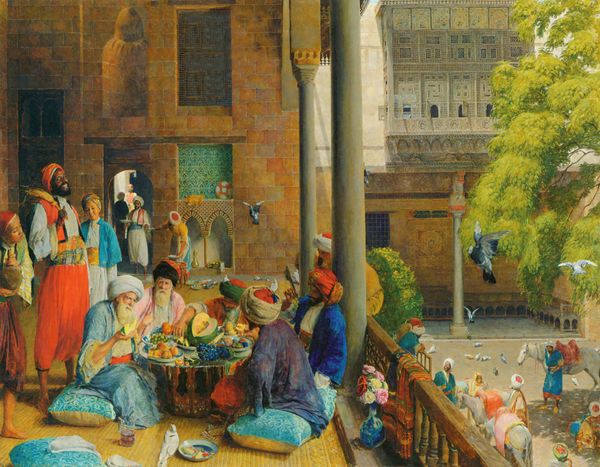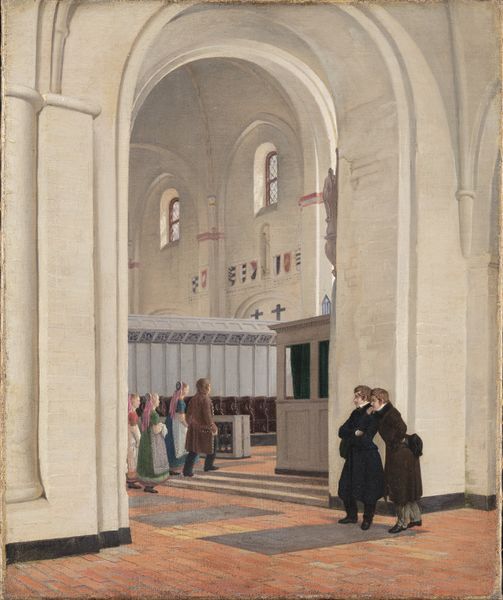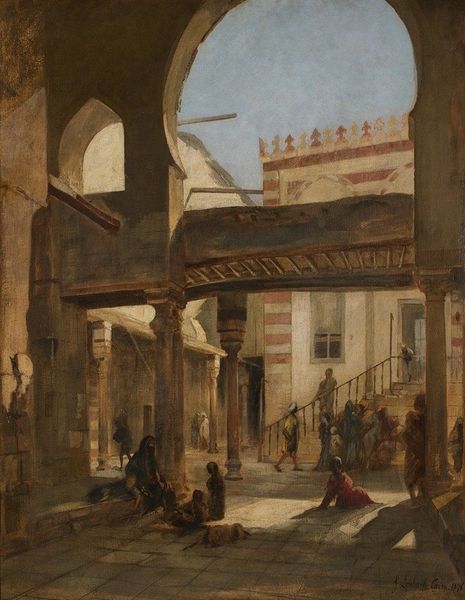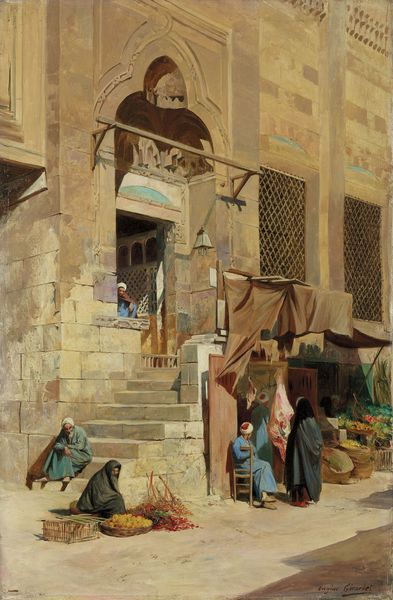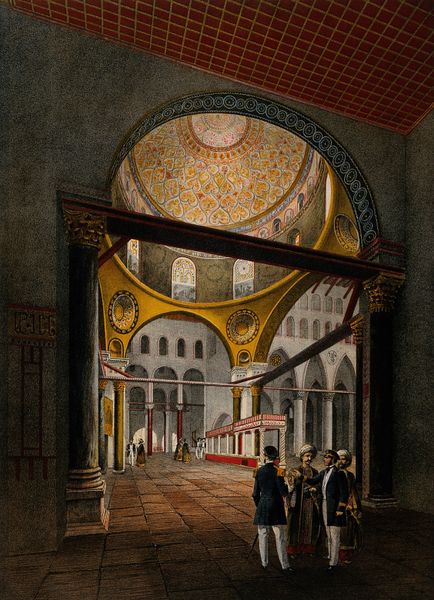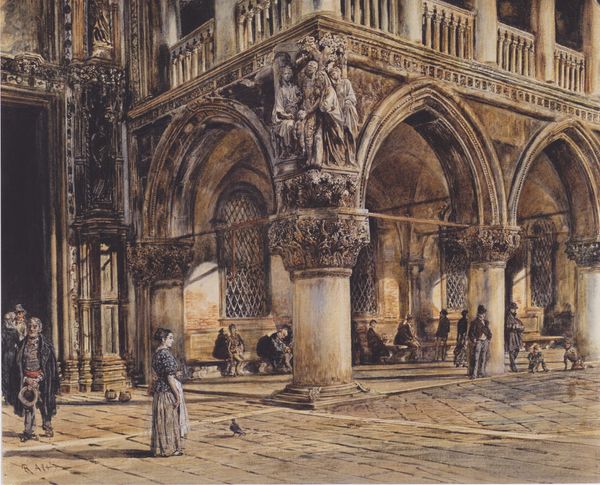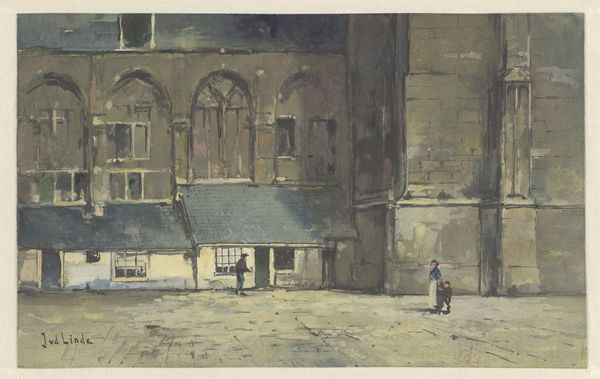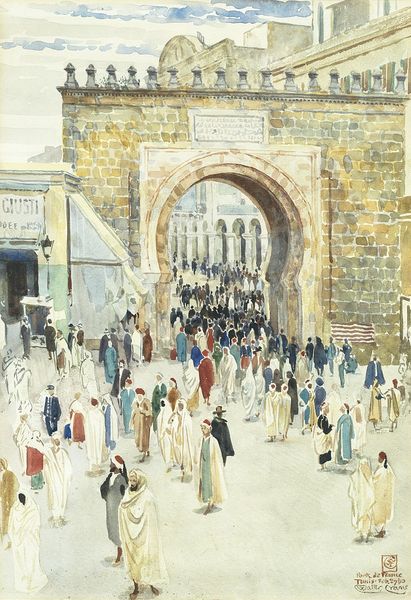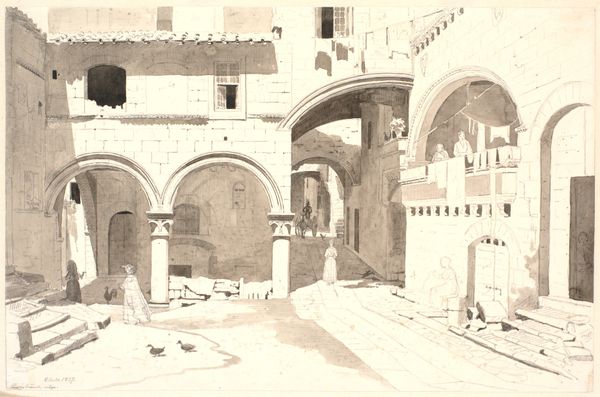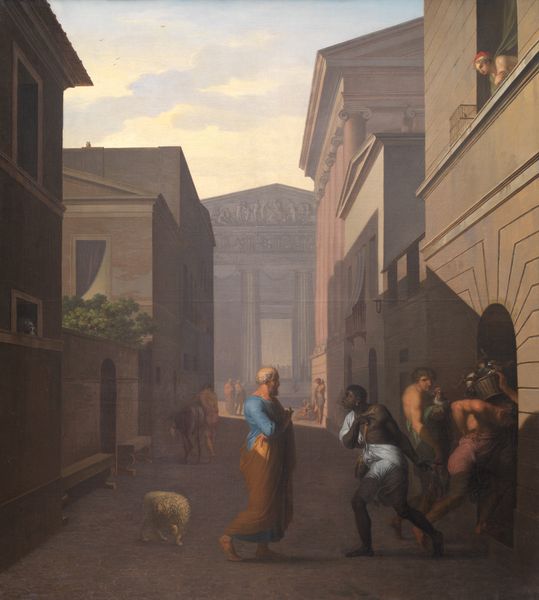
painting, oil-paint
#
portrait
#
painting
#
oil-paint
#
arch
#
orientalism
#
men
#
islamic-art
#
genre-painting
#
history-painting
#
building
Copyright: Public domain
Editor: Here we have Jean-Léon Gérôme's "Interior of a Mosque," painted in 1870. It's an oil painting, and I'm immediately struck by the almost voyeuristic feeling, like we're peeking in on a private moment. What stands out to you when you look at this piece? Curator: It’s true; Gérôme captures a private, religious experience and presents it for Western consumption, which situates it within a complicated colonial gaze. We must remember that this work is part of the Orientalist movement. It begs the question: whose perspective are we seeing? What is Gérôme trying to say about the East to his Western audience? Editor: So, you're saying it's not just a depiction, but also a commentary from a particular point of view? How does the visual composition reinforce that idea? Curator: Precisely. The light and shadow play a key role, almost theatrical, highlighting certain figures while obscuring others. This selective visibility mimics a power dynamic. Notice how the architectural details, while beautifully rendered, create a sense of enclosure. Does it feel reverent, or restrictive? Is he celebrating or appropriating Islamic culture? These are crucial questions to ask. Editor: I see what you mean. The arches almost become like frames, further distancing us as viewers. Curator: Exactly. And it's important to acknowledge that Gérôme’s work, while celebrated for its realism, is also a construct, shaped by the politics of his time. Thinking about its historical context reveals deeper issues around cultural representation. How do you feel knowing that the ‘truth’ in the artwork is but a prejudiced snapshot of reality? Editor: I'm going to have to rethink my initial reaction. I hadn’t considered how the social context changes the work's significance and how problematic that point of view is. It seems there's so much more to art than just the surface image. Curator: Indeed. By exploring these layers, we confront not only the art but also our own assumptions and biases. It is important to learn about different communities, but to see with an intercultural vision not one driven by our prejudiced assumptions.
Comments
No comments
Be the first to comment and join the conversation on the ultimate creative platform.
